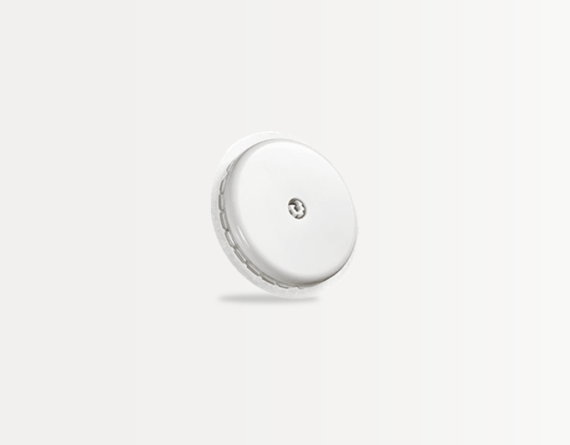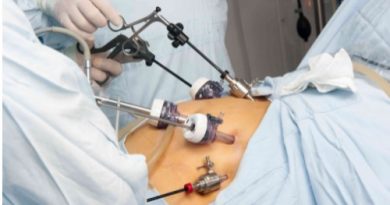How CGM Monitors Work
Continuous Glucose Monitoring (CGM) monitors have revolutionized diabetes management. These small, wearable devices continuously track glucose levels in real time, providing invaluable data that can help individuals make better-informed decisions about their health. If you’re navigating the world of CGM monitors, this article will break down the various types available and help you understand their unique features and benefits.
How CGM Monitors Work
Basic Functionality
CGM monitors use a tiny sensor inserted under the skin to measure glucose levels in the interstitial fluid. This sensor sends data to a transmitter, which then relays the information to a display device, such as a smartphone or a dedicated monitor. The continuous stream of data allows for real-time tracking and alerts for high or low blood glucose levels.
Benefits Over Traditional Methods
Unlike traditional fingerstick methods, CGM monitors provide continuous data throughout the day and night. This means fewer finger pricks and a more comprehensive understanding of glucose trends and patterns, leading to better overall diabetes management.
Popular CGM Monitors on the Market
Dexcom G6
The Dexcom G6 Sensor is one of the most popular CGM monitors available today. It offers a range of features, including real-time glucose readings, customizable alerts, and integration with various smart devices.
Freestyle Libre 3
The Freestyle Libre 3 is another leading CGM monitor, known for its compact size and ease of use. It provides continuous glucose readings and has a user-friendly app for monitoring trends.
Medtronic Guardian Connect
Medtronic’s Guardian Connect is a top choice for many users due to its accuracy and integration with Medtronic insulin pumps. It offers predictive alerts and detailed glucose data.
Dexcom CGM Monitors
Overview of Dexcom G6
The Dexcom G6 is designed to make diabetes management easier and more effective. It eliminates the need for fingerstick calibrations and provides real-time glucose readings every five minutes.
Features and Benefits
- No Fingersticks: The Dexcom G6 does not require fingerstick calibrations.
- Customizable Alerts: Users can set personalized alerts for high and low glucose levels.
- Smart Device Integration: Compatible with smartphones and smartwatches.
- Data Sharing: Allows users to share data with up to 10 followers, making it easier to manage diabetes collaboratively.
Comparison with Dexcom G7
The Dexcom G7 Sensor, an upcoming model, promises to build on the strengths of the G6 with a smaller sensor and faster warm-up time. It aims to provide even more accurate readings and improved user experience.
Freestyle Libre CGM Monitors
Overview of Freestyle Libre 3
The Freestyle Libre 3 offers continuous glucose monitoring with a small, discreet sensor that can be worn on the back of the upper arm. It provides real-time glucose readings and has a simple, intuitive app.
Features and Benefits
- Small Sensor: The smallest and thinnest sensor available.
- Real-Time Data: Provides continuous glucose readings without the need for scanning.
- User-Friendly App: Easy-to-use app for tracking and analyzing glucose trends.
- Affordable: Generally more affordable than other CGM systems.
Comparison with Freestyle Libre 2
While the Freestyle Libre 2 requires users to scan the sensor to get a reading, the Libre 3 offers real-time data without the need for scanning. The Libre 3 also has improved accuracy and a more compact design.
Medtronic CGM Monitors
Overview of Guardian Connect
Medtronic’s Guardian Connect is known for its high accuracy and predictive capabilities. It works seamlessly with Medtronic insulin pumps, providing a comprehensive diabetes management system.
Features and Benefits
- Predictive Alerts: Warns users of potential highs and lows up to an hour in advance.
- Integration with Insulin Pumps: Works with Medtronic pumps for automated insulin delivery.
- Detailed Data: Provides detailed glucose data for better decision-making.
Comparison with Other Medtronic Models
Compared to older Medtronic models, the Guardian Connect offers improved accuracy, better integration with smart devices, and more advanced predictive capabilities.
Choosing the Right CGM Monitor
Factors to Consider
When choosing a CGM monitor, consider factors such as ease of use, accuracy, cost, and integration with other devices. Personal preferences and lifestyle needs will also play a significant role in your decision.
Personal Preferences and Needs
Think about your daily routine, technology comfort level, and budget. Some people may prefer a monitor that offers more data and predictive alerts, while others might prioritize simplicity and affordability.
Pros and Cons of Using CGM Monitors
Advantages
- Continuous Data: Provides a comprehensive view of glucose trends.
- Fewer Fingersticks: Reduces the need for frequent fingerstick tests.
- Improved Diabetes Management: Helps users make better-informed decisions.
Potential Drawbacks
- Cost: Can be expensive, especially without insurance coverage.
- Sensor Maintenance: Requires regular sensor changes and calibration.
- Technical Issues: Potential for connectivity issues and data inaccuracies.
Integration with Other Devices
Smartphone Compatibility
Most modern CGM monitors are compatible with smartphones, allowing users to track their glucose levels on the go. Apps often include features like trend analysis and data sharing.
Integration with Insulin Pumps
Some CGM monitors, such as those from Medtronic, integrate with insulin pumps to provide a more automated and seamless diabetes management experience.
Accuracy and Reliability
How Accurate are CGM Monitors?
CGM monitors are generally accurate, but their precision can vary based on the model and sensor placement. Regular calibration and proper sensor maintenance are crucial for maintaining accuracy.
Factors Affecting Accuracy
Factors such as sensor placement, user activity, and hydration levels can impact the accuracy of CGM monitors. It’s essential to follow the manufacturer’s guidelines for optimal performance.
Cost and Insurance Coverage
Typical Costs
The cost of CGM monitors can vary widely. Initial setup costs can be high, and there are ongoing expenses for sensors and transmitters. However, prices are gradually becoming more competitive.
Insurance and Medicare Coverage
Many insurance plans and Medicare now cover CGM monitors, significantly reducing out-of-pocket costs. It’s important to check with your provider to understand your coverage options.
User Experiences and Reviews
Real-Life Experiences
Many users report that CGM monitors have transformed their diabetes management, offering peace of mind and improved control over their glucose levels.
Common Complaints and Praises
Common praises include the convenience and comprehensive data provided by CGM monitors. Complaints often focus on the cost and occasional technical issues.
Future of CGM Technology
Upcoming Innovations
The future of CGM technology looks promising, with advancements aimed at improving accuracy, reducing sensor size, and enhancing user experience.
Trends to Watch
Keep an eye on trends such as more integrated systems, improved sensor longevity, and greater accessibility through lower costs and wider insurance coverage.
Tips for New Users
Getting Started
New users should start by thoroughly reading the user manual and setting up their CGM monitor according to the manufacturer’s instructions. Regularly check the sensor site for irritation and follow recommended calibration schedules.
Best Practices
- Stay Hydrated: Proper hydration can improve sensor accuracy.
- Monitor Trends: Pay attention to glucose trends rather than single readings.
- Keep Spare Supplies: Always have spare sensors and supplies on hand.
Conclusion
CGM monitors offer a revolutionary way to manage diabetes, providing continuous, real-time glucose data that empowers users to make better-informed decisions. With a variety of models available, it’s essential to choose one that fits your lifestyle and needs. As technology continues to advance, CGM monitors will likely become even more integral to diabetes management.
FAQs
How often should I change my CGM sensor?
Typically, CGM sensors need to be changed every 7 to 14 days, depending on the model and manufacturer recommendations.
Are CGM monitors painful to use?
Most users find CGM sensors relatively painless to insert and wear, although there can be some initial discomfort.
Can I swim or shower with a CGM sensor?
Yes, most CGM sensors are waterproof and can be worn while swimming or showering. Always check the manufacturer’s guidelines.
How do I calibrate my CGM monitor?
Calibration requirements vary by model. Some CGM monitors do not require calibration, while others may need occasional fingerstick tests to ensure accuracy.
Is a prescription required for a CGM monitor?
In many cases, a prescription is required to obtain a CGM monitor. Check with your healthcare provider and insurance company for specific requirements.




